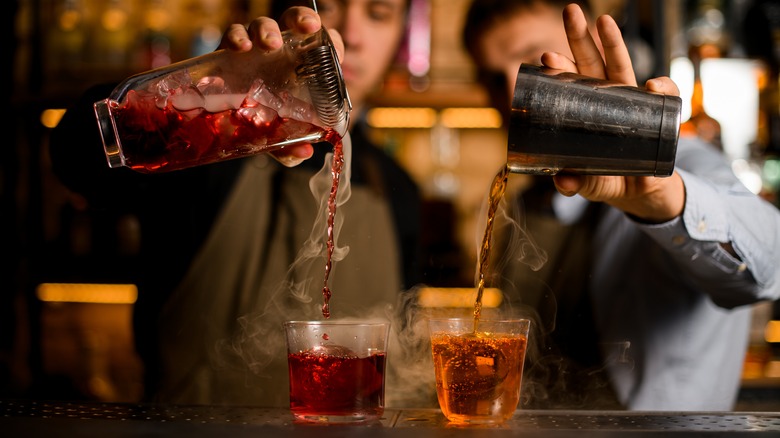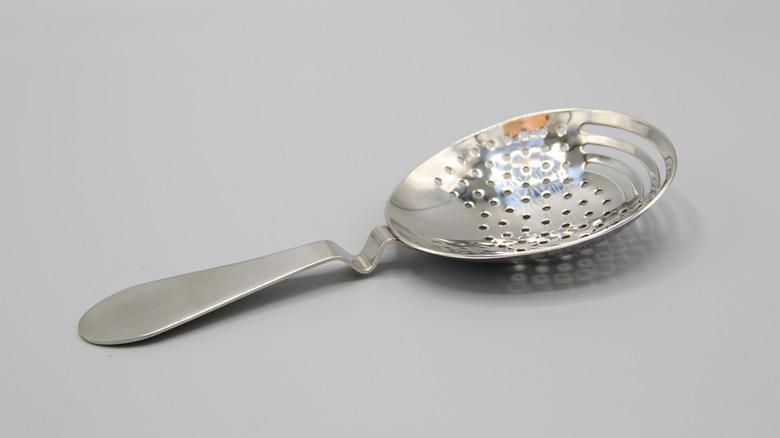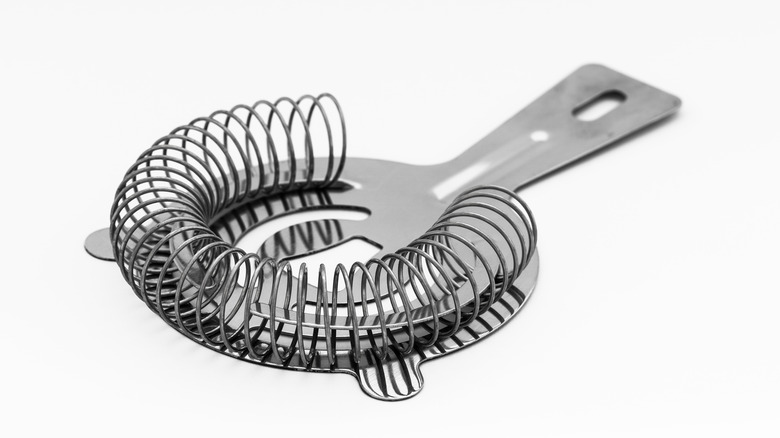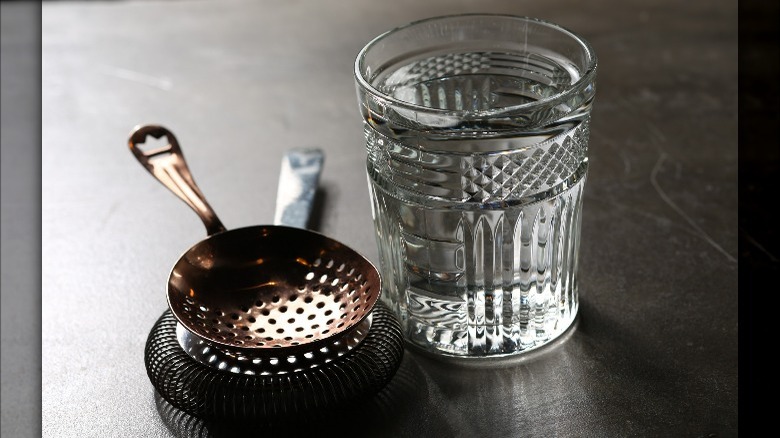Julep Vs. Hawthorne Strainer: Which Is Better For Cocktails?
On a base level, a strainer's job is to block large ice chunks, globs of muddled fruit, pulp, and any other hefty garnishes from making their way into a cocktail. But, Australian barware purveyor Cocktail Kit says a good cocktail comes down to three arenas: taste, texture, and aroma — and a strainer helps mixologists achieve all three. If shaking is an exercise in texture-creation, then straining is the textural cherry on top. Your happy hour margarita or daiquiri would be a gloppy mess without a strainer. (Unless, of course, you order it frozen). It isn't just tropical cocktails that rely on strainers, either: The Châtelaine and the Tom Collins need a good strain before your bartender is ready to slide that glass across the bar.
In the bar world, there are two primary models of strainer: the Julep and the Hawthorne. Which one is better? Let's break it down.
Julep strainers
Julep strainers look like tiny colanders on a stick, and they're the decidedly less-popular of the bar strainers. In fact, according to UK barware supplier Beaumont, their original use was actually more comparable to a colander than to a bar strainer. In the mid-19th century, it says, folks initially placed the strainer over Mint Julep cocktail glasses to prevent chunks of ice from spilling out as they sipped.
Nowadays, however, julep strainers have taken on a much different role in the bar world. As Serious Eats observes, julep strainers sit nicely across the mouth of a mixing glass, making them an ideal fit for cocktails that require a smooth, gentle pour. But, on the flip side, this also makes julep strainers less ideal for use with shakers. Although, as Beaumont notes, they are known to be quite durable and their simple design makes julep strainers easy to clean.
Hawthorne strainers
Hawthorne strainers, on the other hand, are the models that probably come to mind when you think of a bar strainer. According to Tales of a Cocktail, via Über Bar Tools, Hawthorne strainers were named after a perhaps-unlikely bar: The Hawthorne Café in Boston. (The story goes that when inventor William Wright applied for a patent for his strainer, the patent was signed by a man called Denny P. Sullivan — who just so happened to own the Hawthorne bar).
Hawthorne strainers are a thin steel paddle affixed with a semi-circular coiled spring, Serious Eats explains. (Imagine a tin can lid with half a Slinky glued to one side). The two small prongs on either side of the paddle enable the strainer to rest securely across the mouth of the glass, or to span the opening of a shaker.
So, ultimately, which is the better strainer for cocktails? The short answer is: It depends... kind of.
The winner is... The Hawthorne
The popular opinion is: The Hawthorne strainer is the julep strainer's cool older sister who's more fun at parties. Of the julep strainer, Serious Eats writes, "I admit I misplaced all three of mine for months and hardly missed them — that probably means that this little piece of equipment is not a must-have." Tom Macy (former bartender and current co-owner of the Clover Club and Leyenda bars in Brooklyn, New York) agrees. "You can definitely get away with just a Hawthorne strainer without sacrificing much," says Macy. "If you only have one strainer, make it a Hawthorne."
But while the Hawthorne strainer is more versatile, the julep strainer still has its place in the mixologist's arsenal — it just depends on what you're making. Cocktail Kit recommends using a Hawthorne strainer for shaken drinks and a julep strainer for stirred drinks. For a shaken Paloma, reach for a Hawthorne strainer. For a stirred Negroni, a julep strainer is the tool for the job.



